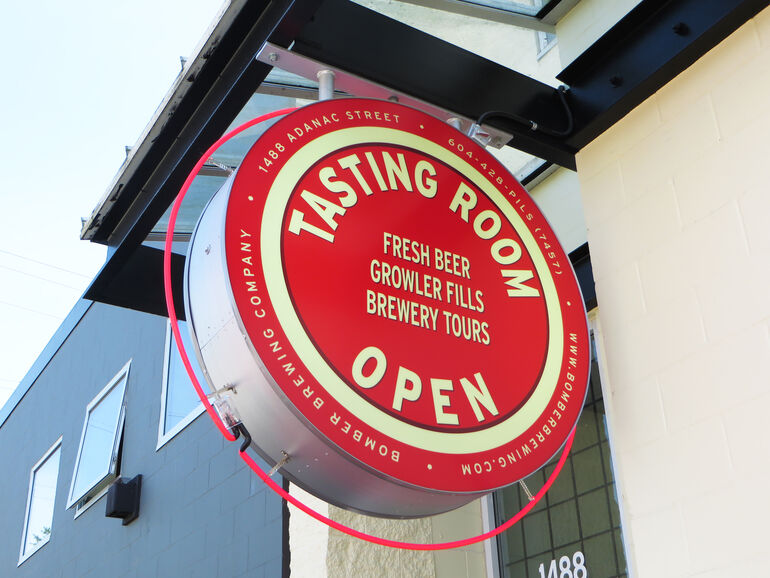Start 14-Day Trial Subscription
*No credit card required

The Business of Tasting Rooms
And now, the debate about the business of tasting rooms. Somehow, one of the best developments ever to come along in craft beer is being characterized in some quarters as not a good thing because it’s disrupting one of the more sacrosanct elements of the business side of craft beer: The three-tier system.
When it comes to growth of tasting rooms, I think it’s been a bi-coastal development. California led the way by allowing breweries to open as many as six – the state once again proving itself to be ground zero for craft growth.
In terms of population growth in tasting rooms, I believe the nod there goes to the small breweries in Vermont that pioneered the juicy, hazy IPA style. How so? Tasting rooms are hopping (pun fully intended) in no small part because brewers are now experimenting with historically high hopping rates in IPAs, which helps keep things lively – if not downright convivial. Compared to the faux excitement of a noisy, chic restaurant or the generic humdrum of sports bars, one can enjoy a truly hopped up atmosphere in tasting rooms.
There’s a demographic at work as well. The boom in tasting rooms can be attributed to the age group of 21 through 39 (aka millennials), which is perhaps an age group that is craving a real-life outlet to engage with friends while enjoying new sensory experiences.
Alas, what’s good for craft brewing does not necessarily pass muster with everyone. Some retailers and distributors are complaining about losing a portion of their business to direct sales at breweries.

There’s a demographic at work as well. The boom in tasting rooms can be attributed to the age group of 21 through 39 (aka millennials), which is perhaps an age group that is craving a real-life outlet to engage with friends while enjoying new sensory experiences.
Photo Courtesy Flickr/Bernt Rostad
Perhaps it’s time to have the debate about doing away with the three-tier system instead of jawboning about tasting rooms. Many of the distributors, some of whom are snapping up smaller operations like frogs tagging flies, are legacy businesses. One of their primary stocks in trade has been growing with the help of a monopolistic requirement that producers must rely on a third party for retail sales.
Tasting rooms embody much of what makes the craft beer movement what it is. They bring people of various backgrounds together in an atmosphere that is conducive to conversation and exchange, something a polarized America could use more of.
Increasingly, breweries and their tasting rooms anchor redevelopment in cities and small towns where increased commercial traffic is desirable, helping to rebuild communities. These developments are considered important by macro brewers, too; when they buy independent craft breweries, established tasting rooms are important criteria.
Overlooked, perhaps, is the fact that tasting rooms may be converting people to beer at a time when the overall beer market is static at best. An increase in craft consumption can be attributed in no small part to tasting rooms – and some of those drinkers are new to beer.
“We saw about 400,000 barrels of growth in direct at-the-brewery sales last year, about a third of total craft growth, and there are new customers coming in through that,” said Bart Watson, chief economist for the Brewers Association.
More than one survey confirmed, said Watson, that people were choosing breweries and eschewing bars.

Tasting rooms embody much of what makes the craft beer movement what it is. They bring people of various backgrounds together in an atmosphere that is conducive to conversation and exchange, something a polarized America could use more of.
“We asked, ‘Is going to a brewery a different occasion or is it one where you would have chosen to go to a bar and you just chose to go to a brewery?’ About two-thirds of the people said that either it’s a new occasion – I wouldn’t have gone to a bar – or it’s in addition to my usual bar. So, it was 40 percent that it was a new occasion versus 24 percent that said I could have also gone to my usual bar. So, two-thirds are saying it’s a different occasion.”
Whether these are converts to craft from macro or converts to beer, the tasting rooms are proving to be creatively disruptive, but distributors and retailers can also benefit from tasting rooms. After tasting beers at the brewery, many visitors later buy the same beer on tap elsewhere or via off-premise retail. So, what’s not to like?
Internally, tasting rooms generate cash flow for brewers that would be hard to replace – and that cash flow sometimes makes the difference between success and failure, growth and new jobs, or settling for a smaller footprint.
The irony about tasting room growth is the boost it got from small brewers in Vermont, where The Alchemist, Lawson’s Finest Liquids and Hill Farmstead Brewery primed the New England IPA movement currently sweeping America with unfiltered juicy dankness and tropical aromas galore. Relatively small, with limited footprints of distribution, these three breweries are not about large, crowded tasting rooms. (Lawson’s did not even sell beer at its brewery until it opened a new location and tasting room in February 2018; the brewery still uses its 7-barrel system as a pilot system).
On the tide of popularity of Heady Topper, The Alchemist became one of the primogenitors of direct sales, which is at the heart of the “across the bar” and tasting room debate. If brewers could sell all the beer they make across the counter, then the three-tier system by definition would be, well, at least outdated.
But can brewers sell that much beer direct to consumers?

Internally, tasting rooms generate cash flow for brewers that would be hard to replace – and that cash flow sometimes makes the difference between success and failure, growth and new jobs, or settling for a smaller footprint.
Across Vermont’s southern border in Massachusetts, some now well-known case studies are well under way. Tree House Brewing Co. and Trillium Brewing Co., to name two of the leading proponents, are selling packaged beer direct on a scale few thought possible just a few years ago. (Yep, heavily aroma-hopped, unfiltered IPAs are always in the mix.)
When Trillium opened in March 2013, there was no tasting room in the 4,000-square-foot location where founders J.C. and Esther Tetreault decided to start a farmhouse-style brewery in Fort Point, a section of South Boston.
Trillium now has two breweries with a tasting room at the Canton location, plus a “pop-up” beer garden in Boston each year during the warmer months. Where the husband and wife team once had 10 employees, currently they have 100 to help sell an estimated 30,000 barrels direct to consumers.
“I never set out for celebrity status,” said J.C. Tetreault. “I’m uncomfortable with a lot of questions on beer specifics. I just wanted people to enjoy the beer and the experience. It just took off like a rocket.”
That pretty much describes the tasting room phenomenon over the last few years. Much like the question about the staying power of juicy, New England-style IPAs, one wonders how long the tasting room trend will continue – and if the direct-to-consumer movement will follow the Massachusetts prototype.
Or is it all a fad? How long will people wait in line to buy a case of the latest creations? I guess the best answer to this inevitable question concerns the IPA style. People were never certain IPAs would remain as popular as they have become. As it has turned out, once the flavor profiles of IPAs became less bitter, the pursuit of dank and juicy versions has helped drive IPA sales and tasting room turnouts.
The view from here is the tasting room trend is no more likely to go away than the love of IPAs. Given that craft brewers are the biggest winners in this trend, is it time to prepare for legislative discourse in statehouses on the subject of tasting rooms undermining the three-tier status? Stranger twists than this have happened in legislatures when it comes to craft beer, which always seems to find its way into the hearts of people ‒ but not necessarily lobbyists working on behalf of powerful interests outside of craft.
With lobbyists always at the ready, don’t look for an increase in opportunities to sell large volumes direct to craft beer lovers any time soon, which would require changes in laws in many states. Meanwhile, tasting rooms produce enough commerce, bonhomie and local enthusiasm that not even lobbyists can roll back the clock.

Photo Courtesy Flickr/Bernt Rostad



